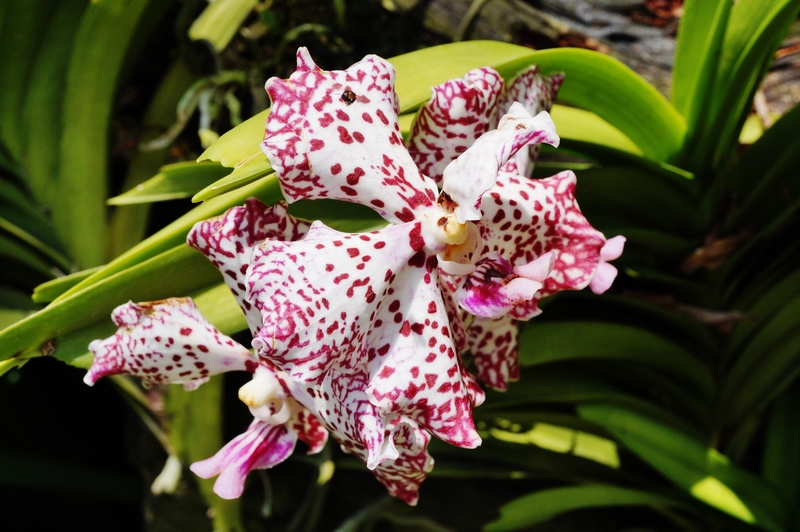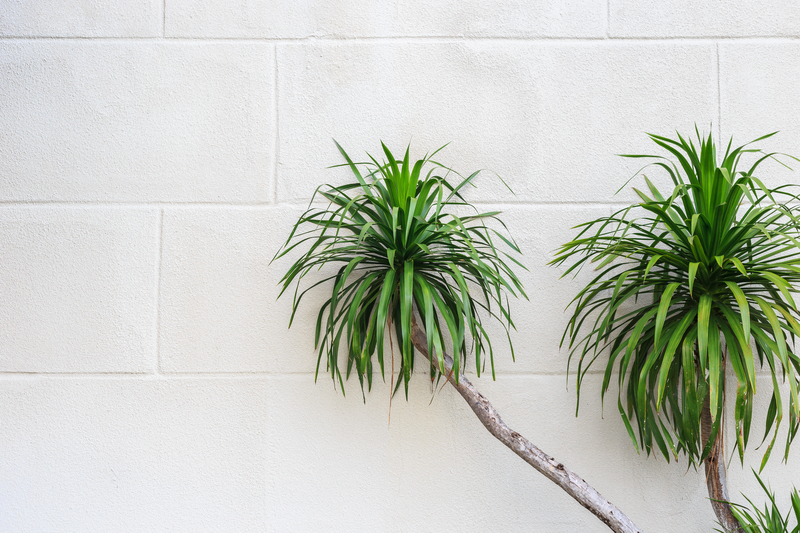Simple Yet Effective Gardening Tricks for Added Outdoor Privacy
Do you dream of a backyard retreat shielded from neighbors' eyes? Whether you have a spacious lawn or a modest balcony, creating private outdoor spaces doesn't always require installing expensive fences or walls. In fact, with some simple yet effective gardening tricks, you can transform your garden into a hidden paradise.
This comprehensive guide unveils clever methods, plant choices, and design tips to increase privacy in your yard. Discover how easy it can be to enhance your outdoor privacy with natural solutions that beautify while they conceal.
Why Outdoor Privacy Matters for Homeowners
A sense of seclusion in your garden or patio isn't just about blocking unwanted views. Outdoor privacy also allows you to relax, entertain guests, and use your space more creatively. Some benefits include:
- Increased comfort: Enjoy your garden without worrying about prying eyes.
- Safety and security: Keeping your outdoor activities and valuables away from public view deters intruders.
- Noise reduction: Strategic planting can help buffer noise from the street or neighbors.
- Enhanced aesthetics: Privacy plantings can beautify and bring nature closer to your living space.
Let's explore top gardening tricks for effective outdoor privacy -- from green walls to clever landscaping features, suitable for every garden size.

Top Gardening Tricks for Enhanced Outdoor Privacy
1. Plant Living Screens for Natural Seclusion
Living screens are rows of tall, leafy plants or shrubs that create a lush barrier. They work wonders for both visual and sound privacy. Some favorite choices for privacy gardening include:
- Evergreen hedges (such as boxwood, privet, or holly) for year-round coverage.
- Bamboo grows quickly, is dense, and provides a tropical feel (choose clumping varieties to prevent spreading).
- Pyracantha, a thorny shrub that not only blocks views, but also offers beautiful berries and bird habitat.
- Leyland cypress, arborvitae, and laurel for fast-growing, towering privacy screens.
Tip: For colorful privacy, try alternating different shrubs or layering heights for a more natural, wildlife-friendly appearance.
2. Use Climbing Plants and Trellises for Vertical Privacy
If space is at a premium, vertical gardening is your best friend for outdoor privacy solutions. Install trellises, arbors, or pergolas and let climbing plants do the rest. Top choices:
- Clematis or honeysuckle for stunning blooms and fragrance.
- Ivy--an evergreen classic (but monitor its spread on walls and fences).
- Wisteria for spectacular cascades of flowers in spring and summer.
- Jasmine for both scent and seclusion.
Creative idea: Place trellises strategically behind seating areas to create cozy nooks or shield a dining space from direct view.
3. Build Layered Plantings for Texture and Privacy
Mimic nature by planting in layers. Combine tall trees, mid-height shrubs, and low-growing perennials to efficiently block sightlines from different angles and elevations.
- Start with fast-growing trees like silver birch, red maple, or magnolia along boundaries.
- Add medium-sized ornamental grasses, hydrangeas, or spirea for density and color.
- Finish with groundcovers or border flowers like hosta or salvia to fill gaps.
Benefit: Layering not only increases privacy, but also improves visual interest and supports local wildlife.
4. Utilize Garden Structures for Instant Outdoor Privacy
Sometimes, plants may take time to mature. For immediate privacy solutions, consider incorporating structures like:
- Lattice or slatted screens--Perfect for patios or balconies, allowing light and air to pass through while blocking views.
- Outdoor curtains--Suspend weather-resistant fabric panels from pergolas or gazebos for a breezy, customizable shield.
- Free-standing panels--Portable and versatile for rearranging as needed.
Combine these with plantings for a harmonious combination of natural and built privacy.
5. Create Sunken or Raised Garden Zones
Playing with elevation can result in natural privacy barriers. Some ideas:
- Sunken patios--Lower a section of your garden to create a hidden lounge surrounded by plant beds.
- Raised beds--Tall planters or retaining walls filled with lush vegetation separate spaces without the need for fences.
Note: Raised beds and sunken patios are especially effective for small yards or urban gardens, maximizing both privacy and growing area.
6. Install Garden Water Features for Visual and Aural Privacy
Although not a physical barrier, water features such as fountains or bubbling streams help mask unwanted sounds and draw attention away from less-private areas.
- Install a small waterfall or bubbling pot near the seating area.
- Surround water features with plants for added concealment and a tranquil retreat vibe.
Water elements aren't just beautiful--they're practical, too, for boosting that sense of outdoor seclusion.
Choosing the Right Plants for Privacy Gardening
The key to effective gardening tricks for privacy is selecting plants that thrive in your climate, match your maintenance preferences, and suit your desired aesthetic. Here's a breakdown:
Best Evergreen Plants for Year-Round Seclusion
- Boxwood: Classic for formal hedges, tolerates shaping and tight spaces.
- Arborvitae ('Green Giant'): Fast-growing, dense, and deer resistant.
- Holly: Glossy leaves and winter berries for birds.
- Photinia: Red-tipped new growth for color interest.
Deciduous Options for Seasonal Privacy
- Purple Beech: Deeply colored foliage for spring to fall privacy hedges.
- Red Maple: Provides summer screening and intense autumn color.
- Hydrangea: Large blooms offer both beauty and bulk as a mid-level screen.
Fast-Growing Hedges for Quick Results
- Bamboo (clumping type): Rapid growth, ideal for narrow spaces.
- Leyland Cypress: Up to 3-4 feet per year under ideal conditions.
- Privet: Hardy and easy to shape.
Flowering and Fragrant Privacy Plants
- Roses: Climbing roses along a trellis add both privacy and charm.
- Lavender: A fragrant low border for patios or walkways.
- Clematis: Showy flowers with quick vertical growth.
Pro Tip: Mix evergreens for year-round coverage with seasonal bloomers for a continually fresh look.
Designing Your Private Oasis: Layout Tips
Assess Directions and Sightlines
Walk your property and note areas where privacy is most needed. Is it a direct line from the neighbor's window, a street view, or a shared pathway? Use privacy gardening tricks in these high-priority spaces first.
Blend Function With Beauty
Your privacy features should complement your overall garden style. Combine formal hedges for classic gardens, or use ornamental grasses and loose plantings for a relaxed, natural aesthetic.
Create Multiple Layers of Privacy
- Screening plants for long-distance privacy (from street or neighbors).
- Mid-level shrubs to block views from seated height.
- Small fences, trellises, or container arrangements for intimate privacy close to patios and decks.
Plan for Maintenance
Choose plants that match your willingness to prune, water, and fertilize. Some, like bamboo or fast-growing hedges, need regular attention to prevent overgrowth.
DIY Projects to Boost Outdoor Privacy
- Build a pallet screen: Upcycle wooden pallets for a rustic privacy wall--paint or stain to match your decor.
- Create a movable planter wall: Arrange tall container plants on wheels to adjust your privacy setup as needed.
- Hang outdoor fabric: Use grommets and hooks to install weatherproof curtains for instant, flexible screening.
Inspiration: Combine these features with string lights, outdoor rugs, or cozy seating for an inviting private retreat.
Privacy Solutions for Small Gardens and Urban Spaces
Don't let limited space hold you back from enjoying a private outdoor area. Some compact tricks include:
- Verandah planters: Tall grasses or bamboo in pots placed along railings double as privacy screens.
- Vertical wall gardens: Living "green walls" maximize privacy and greenery in minimal space.
- Retractable screens: Use folding panels or curtains for on-demand privacy on balconies or decks.
Maintaining Your Outdoor Privacy Plants
Ensuring healthy, lush growth is crucial for effective natural screening. Here's how to maximize your gardening privacy investment:
- Regular pruning: Trim hedges and fast growers for a neat, controlled look.
- Fertilizing and watering: Feed according to your plant's needs for vigorous leaf production.
- Pest watch: Inspect for common pests and diseases, especially in dense plantings.

Common Mistakes to Avoid in Privacy Gardening
- Choosing the wrong plant for your zone: Always match species to your local climate (check hardiness zones).
- Ignoring mature size: Avoid overcrowding by spacing plants as they will be when full grown.
- Forgetting about maintenance: Fast-growing screens are effective but require regular pruning.
Tip: Always research growth habits before planting and consult your local garden center for region-specific suggestions.
Final Thoughts: Transform Your Garden Into a Private Sanctuary
With these simple yet effective gardening tricks for outdoor privacy, you don't need to sacrifice style or break the bank to enjoy solitude in your backyard. Whether you choose living walls, layered landscapes, or creative DIY screens, your private green oasis is within reach.
Start planning your outdoor privacy sanctuary today, and soon you'll be relaxing in comfort--hidden from the world yet surrounded by beauty.
Frequently Asked Questions About Outdoor Privacy Gardening
- What's the fastest way to add privacy using plants? Fast-growing options like bamboo (clumping varieties), Leyland cypress, or sturdy trellises with flowering vines offer quick results.
- Do I need planning permission for tall hedges? Check with your local council or HOA to ensure compliance with height and boundary rules.
- How can I maintain privacy year-round? Prioritize evergreens as your main screening plant, and supplement with deciduous and flowering species for seasonal variety.
For more outdoor privacy ideas and inspiration, visit your local nursery or consult a landscaping professional. Your serene, private backyard escape awaits!